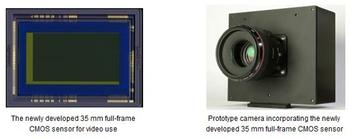Canon Inc. has some interesting news today regarding a new photographic sensor in development. The Japanese imaging giant has “successfully developed a high-sensitivity 35mm full-frame CMOS sensor exclusively for video recording”. It’s very sensitive and provides low-noise full HD video capture in “exceptionally low-light environments” where the naked eye would find it hard to perceive objects.
How it works
Canon uses a 35mm full-frame CMOS sensor with pixels measuring 19 microns square. These, the company informs us, are over seven times larger than the pixels on the top-of-the-line EOS-1D X camera. Additionally there are new technologies employed to reduce noise.
Capabilities
The easiest way to see the new senor’s capabilities are by watching the video above. If you are interested, the version of this video on Canon’s site seems a bit better quality than the YouTube one I could embed above, which has probably been recompressed.
Canon’s press release says that the sensor “facilitates the shooting of clearly visible video images even in dimly lit environments with as little as 0.03 lux of illumination, or approximately the brightness of a crescent moon—a level of brightness in which it is difficult for the naked eye to perceive objects”. A video recording made with an electron-multiplying CCD (EMCCD) shows about as much detail as the human eye can see, capturing magnitude-6 stars. The new CMOS sensor by Canon can capture much fainter images; stars with a magnitude of 8.5 and above.
Also in the video you will see a subject in a dark room with his face lit by just the light from a burning incense stick and footage of meteors from the Geminid meteor shower. I was particularly impressed by the video taken under a full moon. Canon showed a normal lifelike scene at night but also showed what the scene could look like with the sensitivity control increased; the scene was very light and detailed.
As well as nature and astronomy applications the sensor would also probably be very useful in night-time security video recording. If you are in Tokyo tomorrow (or any time until the 8th March) you can pop into the Security Show 2013 at Tokyo International Exhibition Center and see a prototype of the camera and some sample footage.







